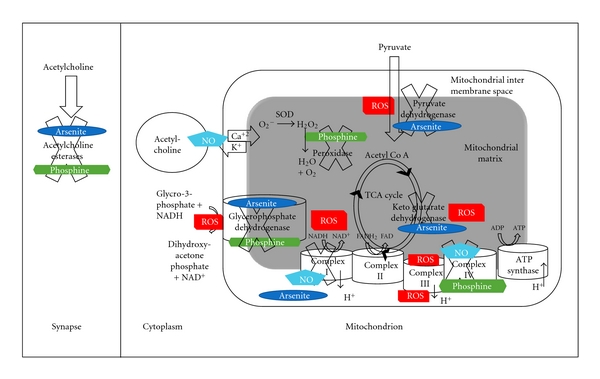Figure 1.

Interaction of phosphine with enzymes involved in metabolic processes and acetylcholine signalling. Sites of interaction with arsenite and nitric oxide (NO) are also shown: phosphine (green), arsenite (dark blue), and nitric oxide (light blue). Sites of ROS generation (red) are indicated as well. The cross behind the names of targeted enzymes indicates that they are inhibited. The potassium and calcium currents are regulated by acetylcholine via NO. Ca2+ triggers the release of acetylcholine from vesicles in the cytoplasm into the neuronal synapse. The acetylcholinesterase degrades acetylcholine, which reduces the strength of neurotransmission. The net effect is that arsenite and phosphine increase acetylcholine signalling by inhibiting the esterase. FAD/FADH2 (Flavin adenine dinucleotide oxidised/reduced), NAD+/NADH (nicotinamide adenine dinucleotide oxidised/reduced), ADP/ATP (adenosine di/tri nucleotide), NO (nitric oxide), ROS (reactive oxygen species), and TCA (tricarboxylic acid).
